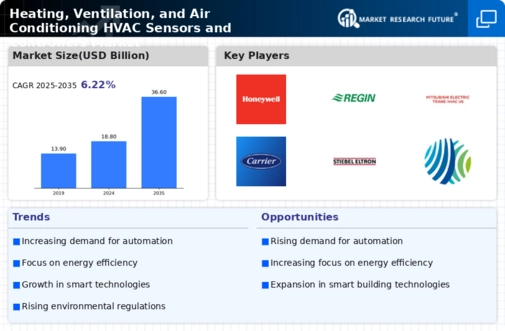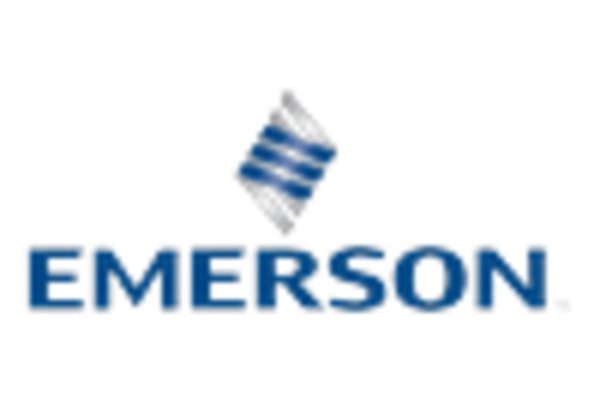Regulatory Pressures and Standards
Regulatory pressures and standards are increasingly influencing the Heating, Ventilation, and Air Conditioning HVAC Sensors and Controllers Market. Governments worldwide are implementing stricter regulations aimed at reducing greenhouse gas emissions and promoting energy efficiency. Compliance with these regulations often necessitates the adoption of advanced HVAC technologies that utilize sensors and controllers for optimal performance. The market is witnessing a surge in demand for systems that meet these regulatory requirements, as businesses and homeowners strive to adhere to environmental standards. This regulatory landscape is likely to propel the growth of the HVAC sensors and controllers market as stakeholders seek compliant and efficient solutions.
Rising Demand for Energy Efficiency
The increasing emphasis on energy efficiency is a primary driver for the Heating, Ventilation, and Air Conditioning HVAC Sensors and Controllers Market. As energy costs continue to rise, consumers and businesses alike are seeking solutions that reduce energy consumption while maintaining comfort. The integration of advanced sensors and controllers allows for more precise temperature regulation and airflow management, leading to significant energy savings. According to recent data, energy-efficient HVAC systems can reduce energy usage by up to 30 percent. This trend is further supported by government incentives and rebates aimed at promoting energy-efficient technologies, thereby enhancing the market's growth potential.
Growing Awareness of Indoor Air Quality
The growing awareness of indoor air quality (IAQ) is a significant driver for the Heating, Ventilation, and Air Conditioning HVAC Sensors and Controllers Market. With increasing concerns about health and well-being, consumers are prioritizing systems that improve air quality within their homes and workplaces. Advanced sensors that monitor pollutants, humidity, and temperature are becoming essential components of modern HVAC systems. Research indicates that poor indoor air quality can lead to various health issues, prompting a shift towards HVAC solutions that incorporate air quality monitoring features. This trend is expected to drive market growth as consumers seek to create healthier living environments.
Technological Advancements in HVAC Systems
Technological advancements play a crucial role in shaping the Heating, Ventilation, and Air Conditioning HVAC Sensors and Controllers Market. Innovations such as IoT-enabled devices, smart thermostats, and advanced control algorithms are transforming traditional HVAC systems into intelligent solutions. These technologies enable real-time monitoring and control, enhancing system performance and user experience. The market for smart HVAC systems is projected to grow significantly, with estimates suggesting a compound annual growth rate of over 10 percent in the coming years. As consumers become more tech-savvy, the demand for sophisticated HVAC solutions that offer convenience and efficiency is likely to increase.
Increased Construction and Renovation Activities
Increased construction and renovation activities are driving the Heating, Ventilation, and Air Conditioning HVAC Sensors and Controllers Market. As urbanization continues to rise, there is a growing need for efficient HVAC systems in new buildings and retrofitting existing structures. The construction sector is experiencing a resurgence, with investments in residential and commercial properties leading to heightened demand for advanced HVAC solutions. Market data suggests that the construction industry is expected to grow at a steady pace, further fueling the need for innovative HVAC technologies. This trend indicates a robust opportunity for HVAC sensors and controllers as they become integral to modern building designs.


















Leave a Comment